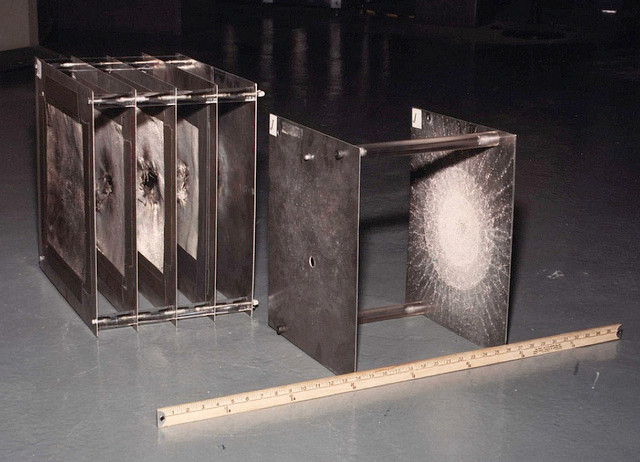Space is full of micrometeroids and debris whizzing around at incredible speeds, thousands of metres per second. At these speeds even tiny objects have enormous amounts of kinetic energy and can cause serious damage on impact.

The image above shows what happens to a eighteen centimetre-thick aluminium plate when struck by a two-and-a-half gram twelve millimetre-wide aluminium ball travelling at nearly seven kilometres per second . You can see the large crater created, and spalling beginning to occur on the opposite side of the plate as the impact shockwave reflects off it.
To prevent damage to spacecraft thick and heavy shielding as shown above is clearly unsuitable; this is where the Whipple shield comes into play.
In its simplest form a Whipple shield is simply two thin layers of shielding separated by a gap. Impact with the first layer of shielding causes the projectile to vaporise, preventing it from penetrating the second layer. In this way two light and thin layers can have a much better shielding effect than one heavy and thick layer. (Other types of Whipple shielding also exist, using multiple layers or “stuffed” layers containing a substance like Kevlar.)
 (L-R) A multi-layer and twin-layer Whipple shield.
(L-R) A multi-layer and twin-layer Whipple shield.
In the example on the right-hand side it is easy to see the shielding effect in play – the projectile has punched a tiny hole in the first layer but failed to penetrate the second layer, causing only minor heat damage (from the plasma produced on impact).